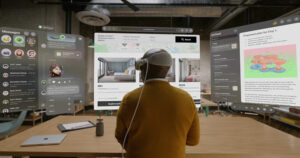
If there’s one prospect that sends shivers down the spines of shutterbugs everywhere, it’s the expectation that some day, some way, all their photos will disappear in a computer mishap.
There are several ways to guard against such disasters, but a neat, mobile way to do it is with the Polaroid Media Backup Photo Edition (US$119 to $149).
The Polaroid unit contains a 2.5-inch hard drive with 40 gigabytes of storage in a compact matte black package that measures 4.9 by 3.0 by 0.5 inches — about the size of half an inch of index cards. The outside of the device has a rubberized feel that allows a user to get a firm grip on it.
The drive runs off AC power, which limits its mobility to some extent.
Backup Countdown
When you marry your computer with the drive, the Polaroid device automatically runs its ClickFree software.
If you don’t do anything when ClickFree launches, it will warn you that it’s going to suck photos from your computer and start a countdown.
Before the countdown is finished, though, you can click on the Setup Options button to customize the software’s configuration.
For example, you can change the locations where ClickFree looks for photos.
The default setting ClickFree’s search function is your entire computer, save Windows System folders and all removable drives and media. If you turn off the defaults, you can limit the program’s search to individual folders or expand it to other storage devices on your system.
Customized Search
You can change what the software looks for, as well.
By default, ClickFree searches for all movie, photo an RAW files on your system. RAW files are uncompressed image files, and their file structure can vary from camera maker to camera maker.
ClickFree supports more than 20 RAW types, as well as more than 20 photo file types and 15 video types.
To moderate what’s copied to the Polaroid drive, you can control the minimum and maximum sizes of files. The default minimum is 25 kilobytes and the maximum is 100 megabytes.
The software also searches for embedded files on your system. Those are photos in compressed, or zipped, files and images attached to e-mail messages.
Incremental Backups
Should something happen to your photo files on your system, you can restore all your files or select ones with the ClickFree application.
The software includes a screen to keep tabs on the drive. Although the drive is rated at 40 gigabytes, its actual capacity is 36.6 GB.
Using the software’s defaults, ClickFree backed up 3,643 photos from my system in slightly over nine minutes. Future backups should be faster since only new photos are copied during a backup.
After transferring the photos, the program opened a window displaying thumbnails of the images. When you click on a thumbnail, a larger version of the image appears in a frame on the right side of the window.
Disaster Insurance
Below that frame is another that displays a folder tree of how files are stored on the drive. The tree reflects the folder structure on your hard drive, which makes finding photos easier.
The window also contains a toolbar for a variety of tasks, such as e-mailing photos, making one your desktop wallpaper, burning images to CD or printing them.
When I tried to e-mail a photo from the program, I received a message that it only works if Microsoft Outlook or Outlook Express is a system’s default e-mail application. Since I use Thunderbird as my default, I won’t be using the e-mail component of the program any time soon.
Polaroid’s Media Backup is a very easy-to-use and convenient way to make sure your images remain safe when disaster strikes your computer.
John Mello is a freelance business and technology writer who can be reached at [email protected].




















































